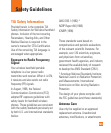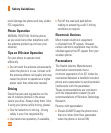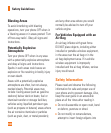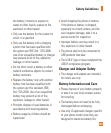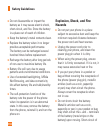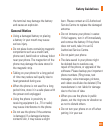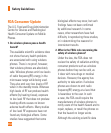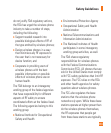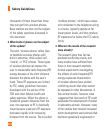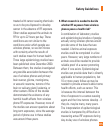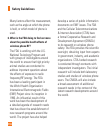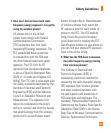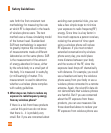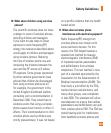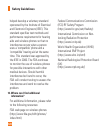
113
Safety Guidelines
do not justify FDA regulatory actions,
the FDA has urged the wireless phone
industry to take a number of steps,
including the following:
]
Support needed research into
possible biological effects of RF of
the type emitted by wireless phones;
]
Design wireless phones in a way
that minimizes any RF exposure to
the user that is not necessary for
device function; and
]
Cooperate in providing users of
wireless phones with the best
possible information on possible
effects of wireless phone use on
human health.
The FDA belongs to an interagency
working group of the federal agencies
that have responsibility for different
aspects of RF safety to ensure
coordinated efforts at the federal level.
The following agencies belong to this
working group:
]
National Institute for Occupational
Safety and Health
]
Environmental Protection Agency
]
Occupational Safety and Health
Administration
]
National Telecommunications and
Information Administration
]
The National Institutes of Health
participates in some interagency
working group activities, as well.
The FDA shares regulatory
responsibilities for wireless phones
with the Federal Communications
Commission (FCC). All phones that are
sold in the United States must comply
with FCC safety guidelines that limit RF
exposure. The FCC relies on the FDA
and other health agencies for safety
questions about wireless phones.
The FCC also regulates the base
stations that the wireless phone
networks rely upon. While these base
stations operate at higher power than
do the wireless phones themselves,
the RF exposures that people get
from these base stations are typically



